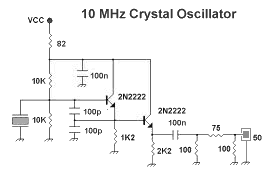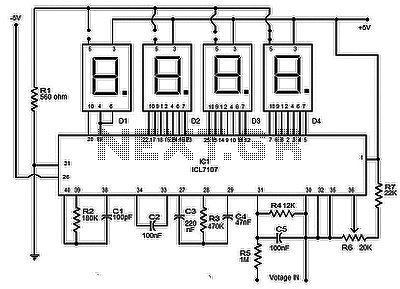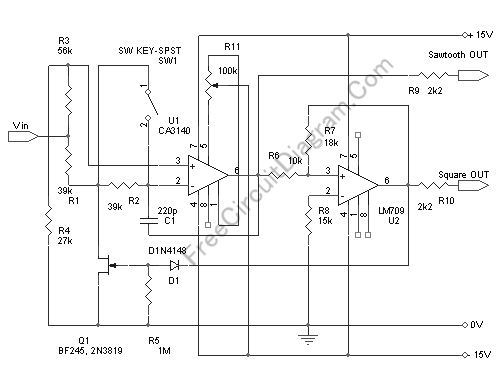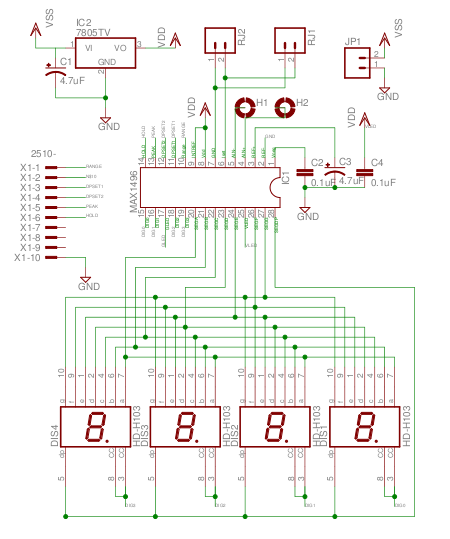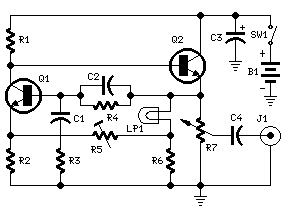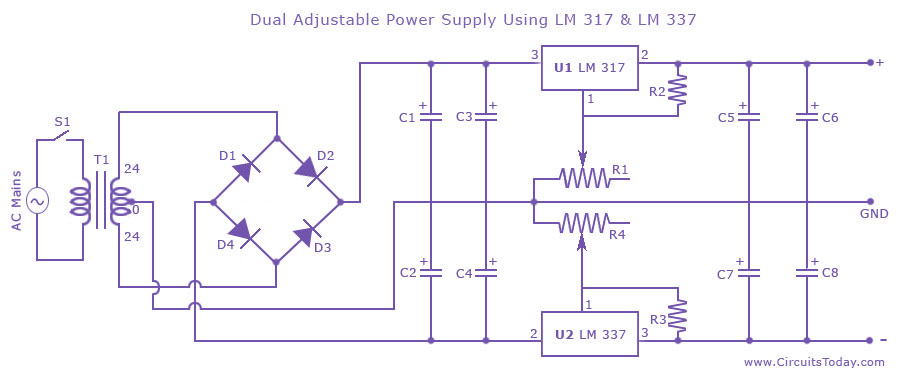
32.768 KHz Oscillator using Watch Crystal

This weblog focuses on electronic circuit schematics, PCB design, DIY kits, and electronic project diagrams. It discusses a 32.768 kHz square wave generated by a common watch crystal. This output can be connected to a 15-stage binary counter to achieve a 1-second square wave. The circuit utilizing the 4069 inverter is preferred over the transistor circuit as it produces a superior waveform. The single transistor circuit yields a ramping waveform but has the advantage of swinging across the entire supply voltage range, allowing it to effectively drive the input to a CMOS binary counter.
The circuit described operates based on the oscillation of a 32.768 kHz crystal, a frequency commonly used in timekeeping applications due to its stability and accuracy. The crystal generates a precise square wave output, which is essential for timing applications. This output is then fed into a 15-stage binary counter, which divides the frequency down to a 1 Hz square wave, suitable for various timing applications.
The choice of the 4069 inverter is significant as it provides a clean and stable output waveform, which is critical for digital circuits that rely on precise timing signals. The inverter circuit enhances the signal integrity, reducing noise and distortion that could arise from alternative configurations, such as those using a single transistor.
The single transistor circuit, while capable of producing a square wave, tends to generate a ramping waveform. This characteristic may not be suitable for all applications, particularly where sharp transitions are required. However, its ability to swing the output across the full supply voltage range allows it to interface directly with CMOS binary counters, which typically require a full rail-to-rail signal for reliable operation.
Overall, the circuit design choices made in this application reflect a balance between waveform quality and operational requirements, ensuring that the generated square wave can effectively drive subsequent digital circuitry.Welcome to the weblog where we discuss about electronic circuits schematics, PCB design, diy kits and electronic projects diagrams. a 32. 768 KHz square wave from a common watch crystal. The output can be fed to a 15 stage binary counter to obtain a 1 second square wave. The circuit on the left using the 4069 inverter is recommended over the trans istor circuit and produces a better waveform. The single transistor circuit produces more of a ramping waveform but the output swings the full supply voltage range so it will easily drive the input to a CMOS binary counter. 🔗 External reference
The circuit described operates based on the oscillation of a 32.768 kHz crystal, a frequency commonly used in timekeeping applications due to its stability and accuracy. The crystal generates a precise square wave output, which is essential for timing applications. This output is then fed into a 15-stage binary counter, which divides the frequency down to a 1 Hz square wave, suitable for various timing applications.
The choice of the 4069 inverter is significant as it provides a clean and stable output waveform, which is critical for digital circuits that rely on precise timing signals. The inverter circuit enhances the signal integrity, reducing noise and distortion that could arise from alternative configurations, such as those using a single transistor.
The single transistor circuit, while capable of producing a square wave, tends to generate a ramping waveform. This characteristic may not be suitable for all applications, particularly where sharp transitions are required. However, its ability to swing the output across the full supply voltage range allows it to interface directly with CMOS binary counters, which typically require a full rail-to-rail signal for reliable operation.
Overall, the circuit design choices made in this application reflect a balance between waveform quality and operational requirements, ensuring that the generated square wave can effectively drive subsequent digital circuitry.Welcome to the weblog where we discuss about electronic circuits schematics, PCB design, diy kits and electronic projects diagrams. a 32. 768 KHz square wave from a common watch crystal. The output can be fed to a 15 stage binary counter to obtain a 1 second square wave. The circuit on the left using the 4069 inverter is recommended over the trans istor circuit and produces a better waveform. The single transistor circuit produces more of a ramping waveform but the output swings the full supply voltage range so it will easily drive the input to a CMOS binary counter. 🔗 External reference
